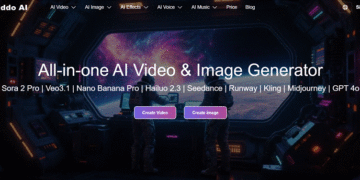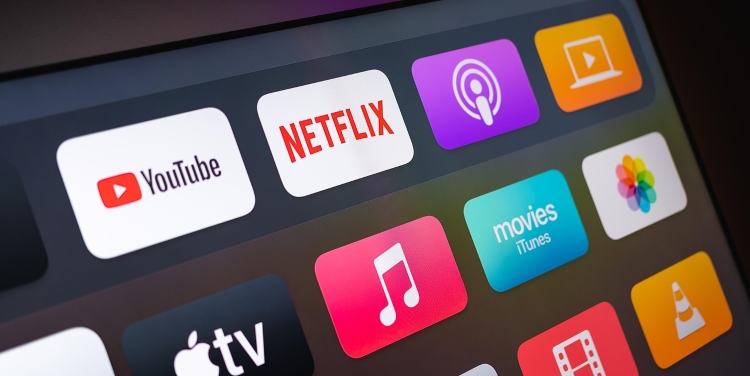Live streaming has rapidly evolved from a niche format to a central part of how audiences engage with entertainment. Whether it’s gaming, music, sport, or interactive casino experiences, live content has transformed passive viewing into dynamic, real-time participation. With faster Internet speeds and more robust mobile capabilities, users now expect instant access to engaging content wherever they are. This shift is not only changing how content is consumed, but also how it is produced and monetised.
Live Dealer Games at Online Casinos
Online casinos have fully embraced live-streaming technology to replicate the atmosphere of a physical casino. Live dealer games allow players to interact with professional dealers in real time, often from studios designed to look like upscale casino floors. This format combines the convenience of online gambling with the social aspect of brick-and-mortar casinos. Players can watch cards being dealt or the roulette wheel spinning while chatting with the dealer and other players.
These live games have attracted a broad range of users who value transparency and interaction. Platforms are investing in multi-angle cameras, high-definition streams, and low-latency connections to improve the player experience. Features like real-time chat, side bets, and dynamic game environments are also becoming standard. Many of the best non GamStop Curacao casino sites offer players enhanced anonymity through hassle-free sign-ups with minimal KYC procedures, diverse live casino games, swift payouts via flexible payment methods, and enticing bonuses like welcome rewards, free bets, cashback offers, and no-deposit bonuses. The growing popularity of live dealer games shows how live streaming brings a sense of realism and energy to online play.
Streaming in Film and Television
Traditional film and television studios are leaning heavily into streaming platforms to release content directly to consumers. The surge in services like Netflix, Amazon Prime Video, and Disney+ has led to a new model where premieres often happen online before appearing in cinemas or on broadcast networks. Live streaming has also been used for red carpet events, fan Q&As, and virtual watch parties, which were previously limited to in-person audiences.
For independent creators and small studios, live streaming has lowered the barrier to entry. They can now reach global audiences without the need for large distribution deals. As a result, viewers are offered a wider range of stories, formats, and cultural perspectives, all delivered in real time.
Music and Concert Experiences
The music industry has found innovative ways to connect with fans through live streaming. From intimate home performances to full-scale virtual concerts, artists are using platforms like YouTube Live, Instagram, and Twitch to maintain visibility and income. Live streaming became particularly prominent during the pandemic, but many artists continue to use it to supplement in-person tours.
These experiences often come with added features like backstage access, live chats, and exclusive merchandise drops. Some performers host interactive shows where fans can request songs or vote on setlists, creating a new type of engagement. Music streaming services are also investing in live radio formats and one-off live sessions, blurring the lines between traditional broadcasting and internet-first models.
Sports and Real-Time Fan Engagement
Sports broadcasting has been one of the earliest adopters of live streaming, with fans now able to watch matches on their phones, tablets, and smart TVs. In fact, 72% of UK sports viewers say they feel increasingly comfortable streaming live sports. Platforms such as DAZN, ESPN+, and Amazon Prime have secured exclusive streaming rights for major events, showing that digital broadcasting is now a central part of sports media.
Beyond just watching the game, fans can access live commentary, behind-the-scenes footage, and even athlete-hosted streams. Some platforms incorporate fantasy leagues, real-time stats, and betting features directly into the viewing experience. For clubs and athletes, live streaming opens up direct lines of communication with fans, helping to build loyalty and generate revenue.
Podcasts and Interactive Broadcasts
Though traditionally audio-only, many podcasts now use live video streaming for episode recordings, allowing audiences to participate through comments and questions. Platforms like Twitch, YouTube, and Facebook Live have created crossover spaces where podcast hosts can engage with listeners in real time.
This shift has led to hybrid content that blends podcasting with talk shows, live reaction videos, and collaborative Q&As. The live format adds a layer of spontaneity and connection that recorded episodes often lack. Some creators also monetise these live sessions through fan donations, subscriptions, and exclusive behind-the-scenes access.
Conclusion
Live streaming has become a defining feature of modern entertainment, spanning online casinos, film, music, sports, and podcasts. It allows creators and platforms to build real-time relationships with audiences while offering immersive experiences that go beyond traditional media formats. As technology continues to advance, the live element of entertainment is likely to grow even more integrated, offering endless possibilities for interaction, engagement, and innovation.
David Prior
David Prior is the editor of Today News, responsible for the overall editorial strategy. He is an NCTJ-qualified journalist with over 20 years’ experience, and is also editor of the award-winning hyperlocal news title Altrincham Today. His LinkedIn profile is here.













































































